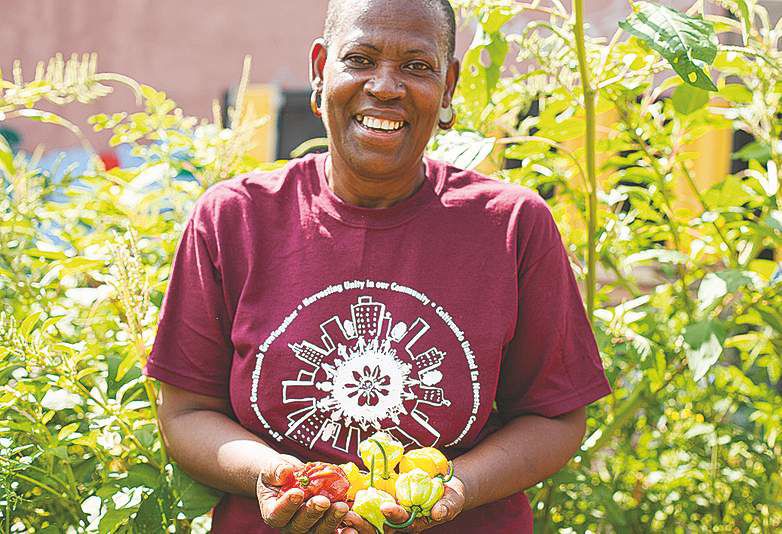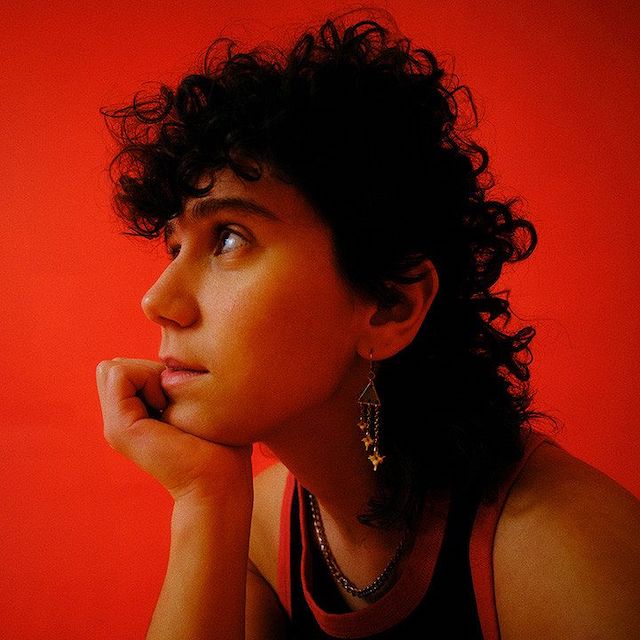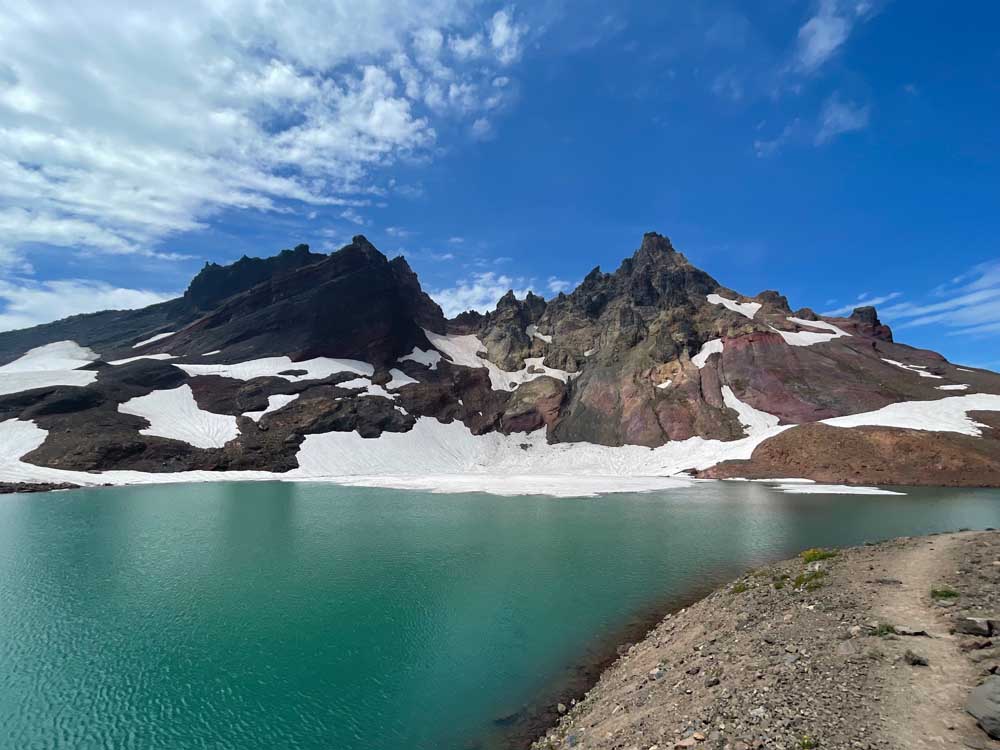New York gardens produce Caribbean treasures
Published 5:00 am Tuesday, October 23, 2012

- Marlene Wilks holds a variety of peppers at East New York Farms, a community garden, in New York. The garden and others in the area are full of diverse plants, all with history attached, from places like the Caribbean and West Africa.
NEW YORK — Heathcliff Huxtable, the prominent Brooklyn Heights gynecologist, knew just where to find a dasheen bush for his anniversary gumbo. He called a Caribbean chef, a “Mr. Atkins,” he said, from a “clean but shabby restaurant” known as the Callaloo Pot.
Most northern gardeners would recognize dasheen (Colocasia esculenta) only as a tame houseplant in a windowsill. Here, it goes by the name elephant ears. Yet the corms, or bulbous tubers, of the dasheen plant are the “coco” of Jamaican cuisine, and the young leaves are a popular boiled green.
Trending
Twenty years ago, Dr. Huxtable — yes, we’re talking about the fictional character on “The Cosby Show” — liked his dasheen bush in an okra soup called callaloo.
Today, the place to unearth dasheen, and dozens of other Caribbean mainstays, is East New York and the neighborhood’s 60 community gardens. There are likely some 16,000 residents of West Indian heritage, said researchers at the Center for the Study of Brooklyn, looking at recent census data. And among this population are some of the most devoted and prolific gardeners in the city of New York.
Diversity
Their bounty often lands at the Saturday farmers market in front of the United Community Centers and its adjacent youth farm.
This is not your “conventional Greenmarket,” said Eric-Michael Rodriguez, 31, a lifelong community gardener in East New York and a horticulturist and seed collector at the nearby Weeksville Heritage Center. “The diversity of plants you see there is like no other market I’ve seen in the Northeast United States.”
It’s a clearinghouse for Caribbean plants: greens like callaloo and Malabar spinach; peppers like the hot Scotch bonnet and the sweet aji dulce; beans like the yardlong, the lablab and the red round; and cucurbits like the sour gherkin and the bizarre bitter melon.
Trending
“It’s funny,” Rodriguez said. “Someone not too long ago asked what it was like to grow up in a so-called urban desert. I didn’t know how to answer that question. In my backyard, we had a nectarine tree and blueberry bushes. We grew beans and leafy green vegetables. We grew a lot of stuff.”
Rodriguez suspects that the availability of green space attracted many Puerto Ricans, like his parents, and other West Indians, too. “You would just walk down the street and see everything that people were growing. People would bring seeds back, or physically bring plants back, or have them shipped from relatives in the Caribbean.”
Imports
In Guyana, the yardlong is plain-old bora, said Carol Wharton, a 58-year-old police dispatcher who cultivates the vine in the Nehemiah 10 community garden, a few blocks north of the United Community Centers farmers market.
The tendrils she was winding onto a trellis have their roots in a recent trip home. “I must have brought back, like, three beans,” she said on a recent evening. Each superlong shell contains perhaps a dozen peas.
How the yardlong got to Guyana and the Caribbean is another question. The answer would seem to lie in an earlier human migration: the forced passage of 12 million souls in the trans-Atlantic slave trade.
“Our image of Africa is of a continent that can’t feed itself,” said Judith Carney, author of “In the Shadow of Slavery: Africa’s Botanical Legacy in the New World,” and professor of geography and environmental studies at the University of California, Los Angeles. But in fact, over the course of 400 years, the farms of the Senegambia region needed to produce a massive surplus of food to provision the slave trade.
The seed stock for New World food gardens, Carney believes, likely came from the leftover provisions and the dried medicinal plant stocks of the Atlantic passage.
“There’s no Johnny Appleseed who tells his story” of distributing African seeds in the Americas, Carney said.
Yet it would seem that many of the popular Caribbean plants in East New York — yardlong beans, lablab (or bonavist beans), okra, vegetable amaranths (or callaloo) and sorrel (Hibiscus sabdariffa) — started their migration in Africa.
Another transplant, with origins in the ancient Indian Ocean exchanges, is the bitter melon (Momordica charantia), now growing in one of Pauline Watson’s four raised beds. The spiny varieties of this vining plant can resemble a pale green puffer fish. Watson’s warty specimen, which she calls “cerasee,” looked more like a cucumber in need of a dermatologist.
Watson, a 65-year-old copy editor, traces her fondness for bitter melon to a Chinese co-worker in Jamaica. One day, she “brought this wonderful curry” for lunch, Watson recalled. “And I said, ‘What is this?’”
The taste can be a surprise, to say the least. The flesh is shockingly bitter, but the seed coating (or aril) inside, by contrast, is gelatinous and sweet. (It’s also possibly toxic to children.)
Watson said she soaks the leaves into a tea. “It cleans your blood and helps treat high blood pressure and diabetes,” she said.
A vegetable as odd as the bitter melon ought to be good for you, somehow.
Melting pot
It has become passe in recent decades to talk about the United States as a melting pot. Except that in the case of the West Indian gardens of East New York, there often is an actual pot — a callaloo pot, as Dr. Huxtable might say. And it really does bubble with the botanical diversity of the Americas.
The Nehemiah 10 garden, for example, originally comprised 10 women from 10 countries, all residents of the surrounding town houses.
That number has increased, though. And on a recent evening, Teresa Girard-Isaac, 51, and a few friends attempted to tick off the heritages of the site’s two-dozen growers.
“We have Guyanese, Grenadians, Trinidadians,” she started. “Mrs. Hassan” — the founder of the garden, some 20 years ago — “is from Cairo.” The list went on: Panama, Puerto Rico, St. Vincent, Belize and an African contingent from Ghana and Nigeria.
Girard-Isaac hails from Castries, the capital port of St. Lucia. As she “tidied up” the artificial turf in her tiny backyard, she reminisced about the expansive gardens of her youth. “I’ll be honest with you,” she said. “When I got here, that’s when I really missed it. On the island, you see all these things. It’s beautiful, but you don’t fuss over it.”
A prime example, she said, was the Malabar spinach (Basella alba) climbing the fence between her backyard and the community garden beyond it. “In St. Lucia, that’s all over the place,” she said. The plant could pass for an ornamental, with its pinkish blossoms and dark fruit. Especially handsome was the red-stemmed Malabar spinach, Rubra, which was growing in several raised beds at Nehemiah 10.
Girard-Isaac plucked a bunch of purplish berries and tossed them into one of the raised beds. “That will be growing tomorrow,” she said.
Callaloo
The difference between a weed, a food crop and an ornamental can seem at once arbitrary and profound, a matter of taste and culture. Take the curious example of callaloo, a type of edible amaranth that flourishes in virtually every plot in East New York.
The most common preparation is to boil it into a gumbo called callaloo. In fact, it is the soup (calalu, in New World Spanish) that gave its name to the green that goes into it. It can be any green at all. The fascinating ethnography “Jamaican Food,” by B.W. Higman, suggests that “callaloo has become both the generic green leafy vegetable of Jamaica and a particular plant.”
But what specific plant? As far back as 1756, the historian recounts, European botanists struggled to classify callaloo. A definitive identification came in 1971: Amaranthus viridis. And yet this species may have crossed with other wild Jamaican amaranths. Once it’s in the pot, who cares?
A crop of callaloo, from start to harvest, can take just three weeks. Let it go and the plant will seed itself. The challenge may not be how to grow amaranth, but how to stop growing amaranth. The vegetative amaranth called pigweed, Amaranthus palmeri, is a tenacious superweed that has developed a resistance to the herbicide Roundup.
Alternately, you could call callaloo a superfood. The plant is vitamin- and protein-packed and edible, when young, from roots to shoots. The flowers form a grain.
In the case of amaranth, the gardeners at Nehemiah 10 have helped to introduce an edible green to New York. Yet what they’ve really brought is a botanical culture: a new way to see a plant that was already here.
Peppers
Marlene Wilks, 60, has counted three callaloos growing in her garden alongside the farmers market. Her husband, Denniston, was just winding down their Saturday stand while she harvested an extra bunch of greens for an elderly customer.
Wilks identified the various types not so much by name, she said, but by the shapes of the leaves and the color of the stalk. A woody, chin-high plant represented “the original callaloo.” A lower, bushier specimen with rounder leaves and paler new growth was “a wild type.”
She paused at yet another amaranth. “This is new to here,” she said, perhaps a hybrid.
Wilks has filled her backyard with plants, and four community garden plots, too. “Last year, we had 42 different kinds of peppers,” she said, a number that sounded fantastic. She countered, “They were all sitting on my table, and none looked alike.”
She disappeared into a row of plants and returned with six Scotch bonnets (Capsicum chinense). The peppers appeared similar: all were the shape of tiny paper lanterns, and they ranged in color from light green to solar orange. And yet notice, she said, how some had pointed tips, or apices, and others rounded ones.
Many of her peppers started as seeds she carried from the island. But others have come from friends in the neighborhood. Pack a profusion of genetic material into a small space, add bees and random crosses are bound to occur.
With each year’s harvest, then, you could say that she has grown a slight variation of a West Indian plant. Or you could look at the brilliant red globe in her hand and conclude something else: Marlene Wilks has bred a brand-new pepper from East New York.








